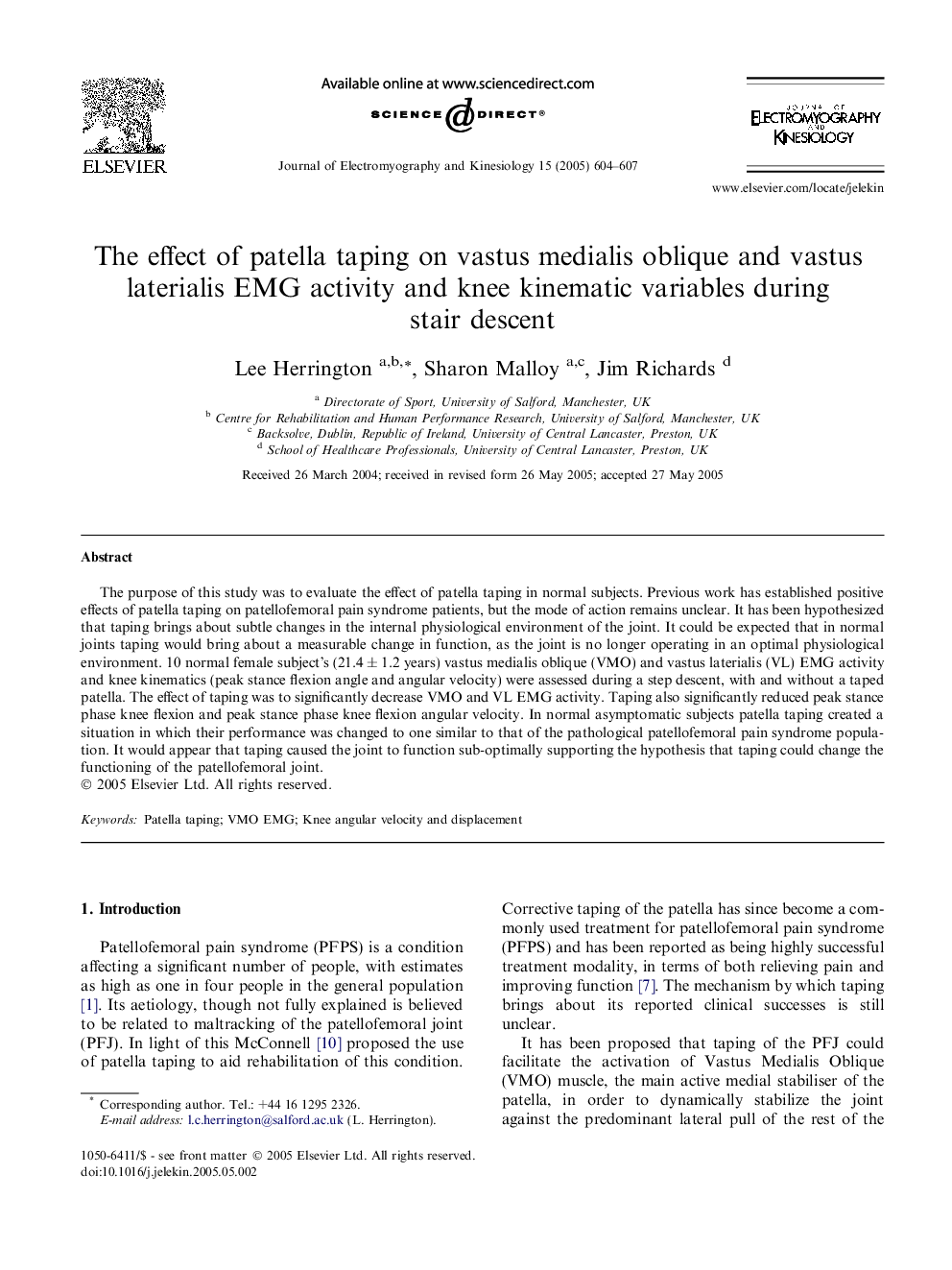| Article ID | Journal | Published Year | Pages | File Type |
|---|---|---|---|---|
| 9353559 | Journal of Electromyography and Kinesiology | 2005 | 4 Pages |
Abstract
The purpose of this study was to evaluate the effect of patella taping in normal subjects. Previous work has established positive effects of patella taping on patellofemoral pain syndrome patients, but the mode of action remains unclear. It has been hypothesized that taping brings about subtle changes in the internal physiological environment of the joint. It could be expected that in normal joints taping would bring about a measurable change in function, as the joint is no longer operating in an optimal physiological environment. 10 normal female subject's (21.4 ± 1.2 years) vastus medialis oblique (VMO) and vastus laterialis (VL) EMG activity and knee kinematics (peak stance flexion angle and angular velocity) were assessed during a step descent, with and without a taped patella. The effect of taping was to significantly decrease VMO and VL EMG activity. Taping also significantly reduced peak stance phase knee flexion and peak stance phase knee flexion angular velocity. In normal asymptomatic subjects patella taping created a situation in which their performance was changed to one similar to that of the pathological patellofemoral pain syndrome population. It would appear that taping caused the joint to function sub-optimally supporting the hypothesis that taping could change the functioning of the patellofemoral joint.
Related Topics
Health Sciences
Medicine and Dentistry
Orthopedics, Sports Medicine and Rehabilitation
Authors
Lee Herrington, Sharon Malloy, Jim Richards,
